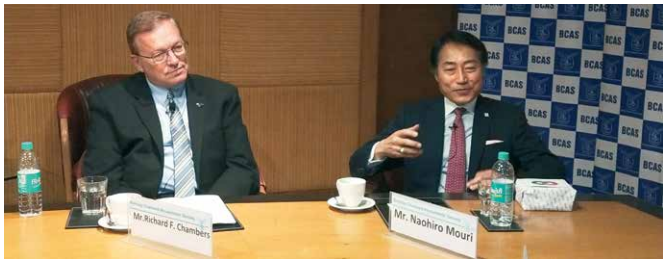21 [2019] 75 ITR (Trib.) 364 (Mum.) TUV India (P) Ltd. vs. DCIT ITA No. 6628/Mum/2017 A.Y.: 2011-12 Date of order: 20th August, 2019
Section 68 r/w/s 194J – Merely because an
amount is reflected in Form 26AS, it cannot be brought to tax in the hands of
the assessee where an error was made by a third person
FACTS
The assessee filed return of income,
claiming Tax Deducted at Source (TDS) of Rs. 6.02 crores whereas TDS appearing
in the AIR information was Rs. 6.33 crores. During the course of scrutiny
assessment, the ITO concluded that the assessee had not disclosed income
represented by the differential TDS of Rs. 30.88 lakhs. The income was
calculated by extrapolating the differential TDS amount (ten per cent of TDS
u/s 194J) and was taxed as undisclosed income in the hands of the assessee.
Aggrieved, the assessee preferred an appeal
to the CIT(A), claiming that the difference was mainly due to the error made by
one of the clients by wrongly furnishing Permanent Account Number (PAN) of the
assessee instead of that of one of their (other) clients. The assessee produced
all possible evidence to prove that the same was on account of a genuine error
made by its client. The CIT(A) deleted the addition partially and confirmed the
rest of the difference, on the ground that the same was irreconcilable.
Aggrieved, the assessee preferred an appeal
to the Tribunal.
HELD
The Tribunal observed that the assessee’s
client had erroneously quoted the assessee’s PAN in its TDS return owing to
which higher TDS was reflected in the assessee’s Form 26AS. However, the
assessee duly filed all the details to explain the difference between the TDS
amounts before the ITO during remand proceedings as well as before the CIT(A).
It produced evidence by way of emails
exchanged with its client to prove that the error took place while filing TDS
returns by the client. It also filed a revised TDS return as well as ledger
account of the client in the assessee’s books, as well as reconciliation
statements, and offered party-wise explanations. Thus, the assessee discharged
its primary onus as cast under the Income Tax laws.
Neither the ITO nor the CIT(A) conducted
necessary inquiries despite having all information in their possession
submitted by the assessee during appellate / remand proceedings.
It further observed that the assessee has no
control over the database of the Income-tax Department as is reflected in Form
No. 26AS and the best that the assessee could do is to offer bona fide
explanations for the differential which the assessee did in this case during
appellate / remand proceedings. The CIT(A) / ITO ought to have conducted
necessary inquiries to unravel the truth, but asking the assessee to do the
impossible is not warranted. No defects in the books of accounts are pointed
out by the authorities below nor were the books of accounts rejected by them.
No cogent incriminating material was brought on record by the authorities below
as evidence / to prove that the assessee has received / earned any income
outside its books of accounts.
Another important aspect which the Tribunal
considered was that though the principle of res judicata was not applicable
to assessment proceedings under Income tax law, from the assessment orders for
other assessment years indications can be drawn as to the behaviour pattern of
the taxpayer and modus operandi of the taxpayer adopted to defraud
Revenue / conceal income, if any. No such incriminating information is brought
on record by Revenue. Therefore, considering the totality of facts as well as
on the touchstone of preponderance of probabilities, the Tribunal held that no
additions to the income are warranted in the hands of the assessee on account
of the above difference.
The ground of appeal filed by the assessee
was allowed.









